Table of Contents
While it may be challenging to keep your puppy from getting all riled up, there are some great ways you can calm them down.
The most important thing is making sure that they get plenty of exercise and playtime; this will wear out the puppy, so they don’t feel as wound-up in general!
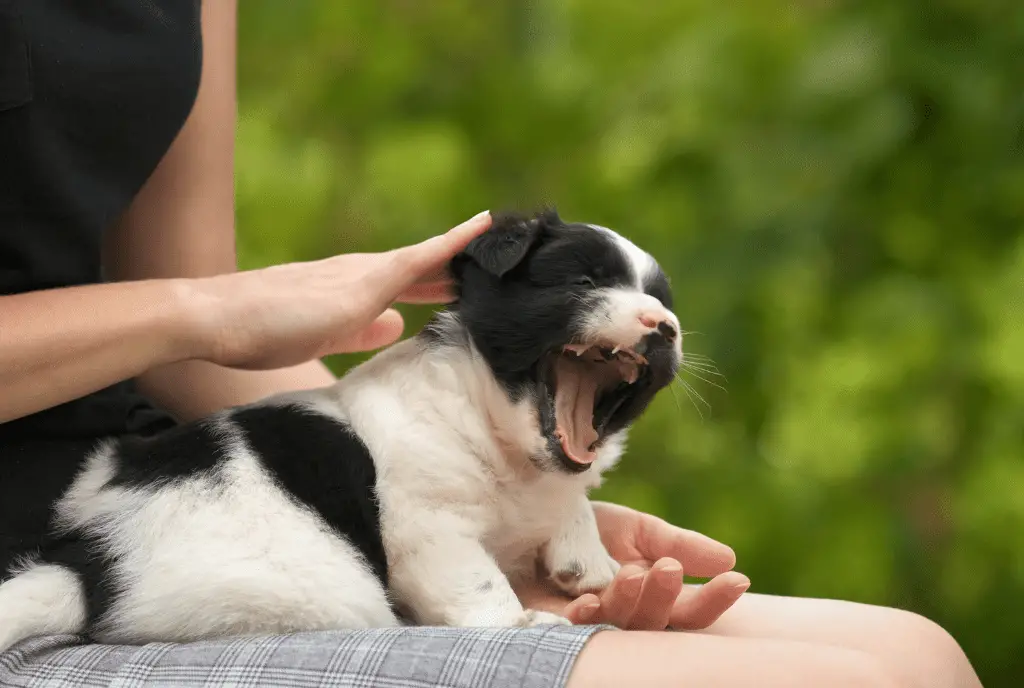
Positive reinforcement is a great way to help your dog learn new things and curb hyperactivity levels.
Offer rewards like tasty treats, pets & verbal praise when they exhibit good behavior – it’s an easy habit that will be long-lasting!
If you’re not able to keep an eye on your puppy at all times, make sure they have a safe place they can retreat to when needed.
This will help calm any excited feelings and teach them how best to handle new situations without overstimulating in front of people (or other dogs or animals).
Puppies can get wound up very quickly, but with these 15 ways, you’ll be able to calm them down in a snap!
Dog Training
The key to success in dog training is always to reward good behavior and ignore bad behavior. We are often aware when our hyper dog is doing something terrible, but we tend to ignore him as soon as he settles down.
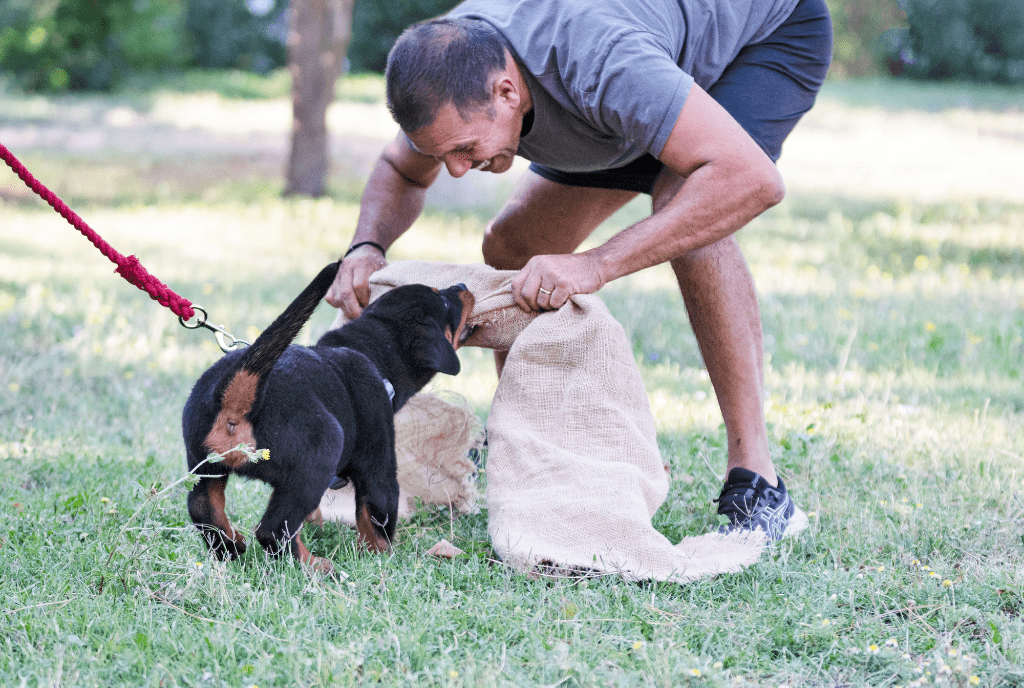
Puppy training is one of the most important things you can do to help your dog develop into a well-behaved adult dog.
It teaches your dog how to behave around people and other dogs, and it can help prevent problems like housebreaking accidents and chewing on furniture.
Clicker training is a positive reinforcement method that uses a clicker to mark the exact moment when the dog does something correctly.
Some other tips for calming down puppies include:
- A pup that is not getting enough playtime may also be destructive or overly needy at other times of the day, so make sure your puppy has plenty of time to burn off energy during the day.
- Take a break from training every couple of hours by playing with your dog with his favorite dog toys. This will give you a chance to stretch and mentally relax while giving your dog the energy he needs for training.
- Feed your dog slowly throughout the day instead of all at once in one sitting. A dog that is overfed or eats too quickly may become hyperactive due to increased blood sugar levels.
- Make sure your dog has plenty of toys and things to chew on.
- Provide a safe place for your puppy to relax. This can be a puppy’s crate, dog bed, or designated spot in the house where the puppy can go when hyper.
- As dog owners, Don’t punish your dog for bad behavior; instead, pass over and provide positive reinforcement only when the dog does something right. Punishing a dog for misbehavior will make him afraid of you or nervous around people in general — not just during dog training sessions.
- Before you start training your pup, you must make sure your dog is sufficiently exercised and has an enriched daily routine.
- Sit down with your dog and calmly go through the training instructions. Dogs are much more likely to respond positively if they know what is expected.
- Training should focus on both the behavioral response (sit, down, walk, stay on your mat) and the emotional state.
Puppy owners often notice that their dog is incredibly hyperactive and difficult to calm down during the first few months of life.
This is perfectly normal, but there are some things you can do to help your dog adjust to his new home.
Why Your Puppy is Hyperactive?
Although puppies are often hypersensitive, they can sometimes help them with excitement by encouraging their owners’ behavior. You don’t need an engagement to engage your puppy through play and excitement.
If you see your pups jumping all the time you’ve been chasing them, you’ve likely got a good chance of doing so.
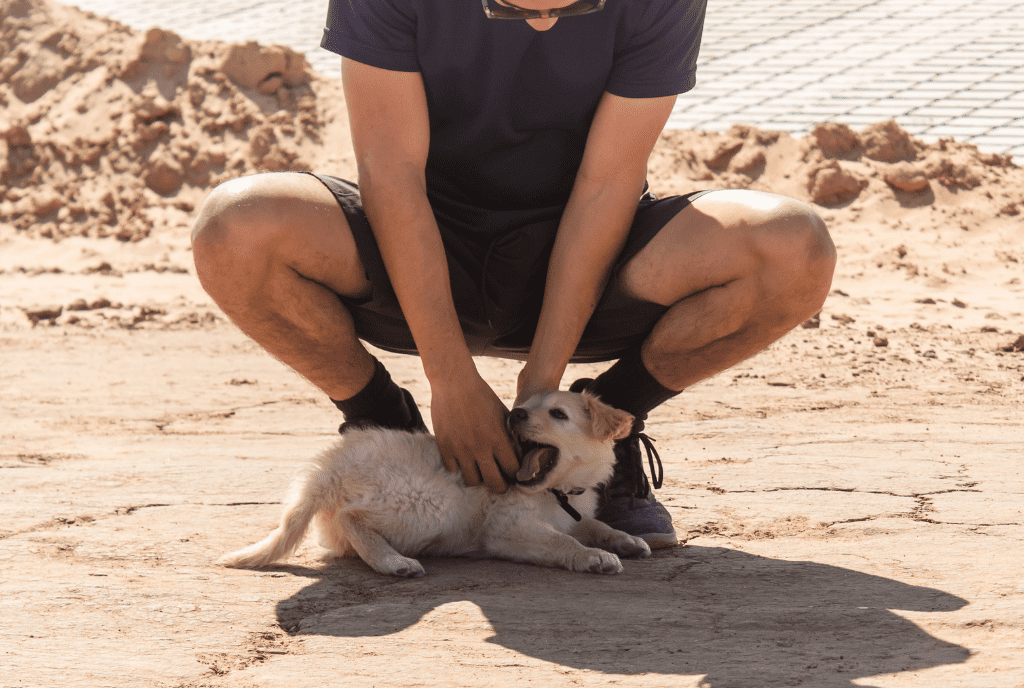
People need to know that grabbing someone else’s attention is not the right thing to do.
How Can I Correct Bad Dog Behavior?
If you are learning how to train a pup correctly, you don’t have any intuitive skills. It is often easier for dog owners to attack your dog when they don’t follow your guidelines unless it’s a severe problem with your dog.
Whenever I hear my dog screaming for help, it is an opportunity to take the next step and breathe.
All dogs should receive positive reinforcement when they are training themselves. The use of anger to cause anxiety in the puppies may also be dangerous in their behavior.
How Can I Calm My Hyper-Puppy?
1. Overtiredness
Sometimes your puppy has just had too much of a good thing. The party was over, and the house was so exciting (for them) they couldn’t settle down to sleep.
Try putting him in his crate if he’ll go in, or watch for signs that it’s time to get sleepy – yawning, heavy eyelids or eyes rolling back, lying down, and rolling around in circles.
We earn a commission if you click this link and make a purchase at no additional cost to you.
He may be getting tired even if he doesn’t show those signs – your puppy’s body language is designed to give you clues about his mental state!
If your dog is too wound up to sleep, try a little playtime right before bed. Tire him out so that when it’s time for lights out, his body will be ready to rest.
2. Classical Music
Something about this music seems to soothe the savage beast, and your puppy is no exception. If he’s hyper and won’t calm down, put on some Bach or Beethoven (or any other classical composer) and see if it works its magic.
If you know that there are certain times when your dog is aroused –when the bus drops off kids after school or the trash trucks make their rounds –you can also put on classical music or a white noise machine to block out some of the commotions.
Instead of going to dog parks, play fetch or tug or set up a playdate with one compatible “friend.”
3. Rewarding Calm Behavior
The hyperactive dog is hard to live with. He barks, jumps on people, and runs around the house all day – it’s exhausting!
If you want him to calm down, try giving treats for good instead of bad behavior.
My dog goes over-excitement whenever I see him or give him attention. If he knocks over a plant, I get angry and yell at him, but if he falls on the floor while playing fetch with me after dinner time (during prime playtime), I immediately say “good boy!” and toss another toy out there for more playing!
We earn a commission if you click this link and make a purchase at no additional cost to you.
The best way to react to an excited dog is to ignore her. Use no touch, no talk, no eye contact.
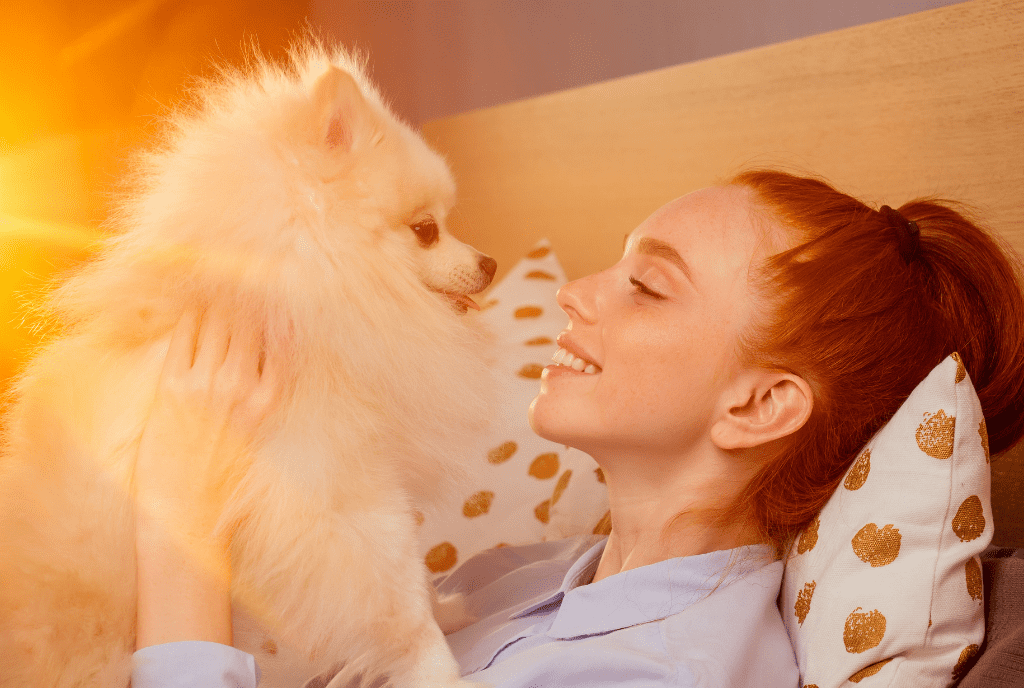
If she tries to jump on you, turn the other way or push her back down. If she gets up again, repeat.
If you’re consistent and calm enough not to reinforce her excitement with attention or treats, the storm will pass in no time!
4. Toys
Dogs over excitement because they want to PLAY! And what’s more fun than playing with your favorite human? Toys are the answer – give your puppy a toy and let him play until he’s exhausted.
We earn a commission if you click this link and make a purchase at no additional cost to you.
My dog has too much energy, so I bought new toys that squeak and bounce to keep him entertained. Alternatively, you could play tug of war with your puppy using a rope. Petting, you must spend time cuddling your puppy.
5. Teach Your Puppy How to Relax
One of the most important things you can do for your new puppy is teaching them how to relax. This will help them get used to being in new environments and reduce their anxiety levels. There are a few different ways you can go about doing this.
The first way is through useful reinforcement. Whenever your puppy does something that shows they’re comfortable and relaxed, reward him with a treat or praise. This will help them learn that it’s okay to be calm in new environments!
The second way is through dog training. Teaching your puppy commands can help you manage his behavior better – he’ll know what you want from him at all times, so he won’t have any reason to act out.
The third way is through massage. Massaging your puppy can help him relax and feel more comfortable in his skin.
Please start at the top of his head and work your way down his body, being sure to use gentle pressure and slow movements.
As you begin to calm your pet down, you’ll notice them visibly begin to relax.
Suppose you’re trying to cover the length of your pup’s body when petting, start at their neck and slowly work your way down their spine.
Keep this gentle motion going until you begin to notice slight changes in their behavior and or attitude.
This time, when your dog begins to relax, repeat, “That’s it…settle… that’s it” in a soft and soothing tone while you pet them slowly.
Once your pet has remained calm for 5 seconds, ECAD recommends taking your pet outside to let them burn off some energy.
This is a rewarding activity and will reinforce the idea that it will get to play outside when calm.
6. Crate Training
Dog crates are a wonderful accessory and are considered a must have by many pet owners. It gives your dog an isolated area where you can relax. It makes it safer for people.
Remember your puppy will sleep for 18 to 20 hours a day. You can put your puppy back in their crate for sleep, or if you haven’t crate trained them.
We earn a commission if you click this link and make a purchase at no additional cost to you.
Teach your puppy to love their crate by putting treats and toys inside, and closing the door while they’re cool.
7. Puppy Training Settle Commands
If you have a hyper puppy and not settling down, one thing you can do is teach them the “settle” command. This will tell your puppy that it’s time to relax.
Teaching your puppy skills like Leave It, Wait, Drop It and Watch Me will help your puppy learn impulse control.
Could use the settle command to achieve a focused response when the puppy is overly excited or anxious, such as greeting family members, strangers, or other animals.
We earn a commission if you click this link and make a purchase at no additional cost to you.
It can also be used when dogs become anxious as the owners prepare to depart or become overly excited when company arrives or when preparing for a walk.
With further training, the eye contact command can be taught, making the dog or puppy focus and look at you instead of causing them to become overly excited.
This skill could tremendously reduce the dog or puppy’s anxiety as well.
The best way to deal with an over-excited puppy is to remain calm. You can learn these in a positive training class or trainer or training book.
We earn a commission if you click this link and make a purchase at no additional cost to you.
8. Exercise
According to American Kennel Club, most dogs, regardless of age or breed, will require a minimum of 20 minutes of daily exercise, which will help them stay calm.
Exercise can come in many different forms, from walking to running, but most dogs will require a combination of both.
In addition to exercise, try to engage with your dog or puppy on a daily basis. This could mean playing a game of fetch, going on walks, or just spending time with them.
This will help your dog become more accustomed to the sights and sounds of the environment they will be in.
If you have an older dog, make sure to keep them active as well.
9. Petting
When you pet your puppy, be sure to use a gentle motion and go slowly. Please start at the top of their head and work your way.
He won’t stop jumping, biting, and playing? Puppies have a lot of energy, and they need exercise and attention, but they also need to learn to settle down and stop playing when you are them.
It is not always intuitive to get an over-excited puppy to calm down; most people tend to yell and push the puppy away.
10. Safety
Kids want to play with puppies, but they will often forget that the dog is a puppy too. A kid might get hurt by stepping on or pinching the dog’s paws.
You need to teach your kids about puppy safety, which includes:
- Don’t let a kid step on or squeeze your dog’s paws.
- Isolate the puppy if it is injured in any way.
- It would be best if you gave them a place with a lot of space and a soft bed.
11. Puppy Socialization
Puppies need to have various positive experiences during their socialization period. The American Veterinary Society of Animal Behavior (AVSAB) recommends that puppies have exposure to a wide variety of people, animals, and environments between 8 and 12 weeks. This helps them develop into well-adjusted adult dogs.
12. Pet Food and Treat
Food and treat is a big part of training a dog. You want to make sure you provide your puppy with quality food and treat that will help them learn and stay healthy.
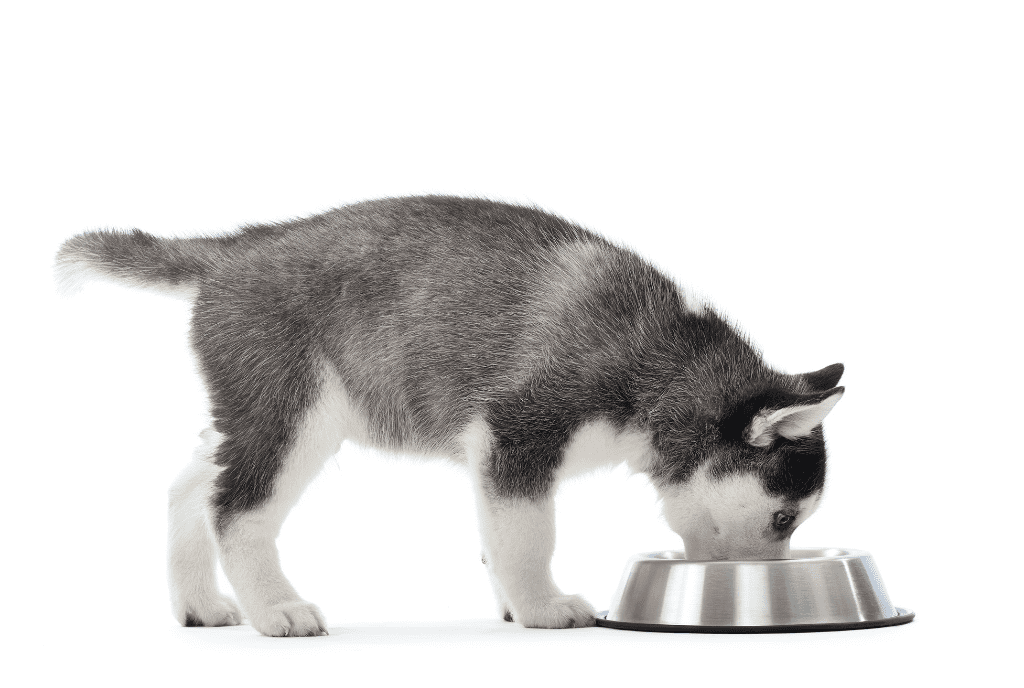
Puppy food is different than adult dog food, so make sure to get the right kind. Your dog will learn to associate their bed with yummy treats and will soon be going to sleep willingly in the hope of getting a tasty reward.
When you’re looking for a food or treat to help with your dog’s behavior, avoid anything that has high sugar content. This will only make them hyper-aroused!
Some good options include:
We earn a commission if you click this link and make a purchase at no additional cost to you.
- Training treats that are low in sugar and high in protein.
- Foods like pumpkin and blueberries, which are healthy for dogs.
13. Ignoring Excited Behavior
One way to get your dog to remain calm is to ignore their excited behavior. If they are jumping, barking, or whining, do not give them attention.
Unwanted behavior is what you don’t like, and it is best to ignore. Managing your dog’s environment can keep him from barking out the window or running around with your shoe.
14. Dogs That Jump
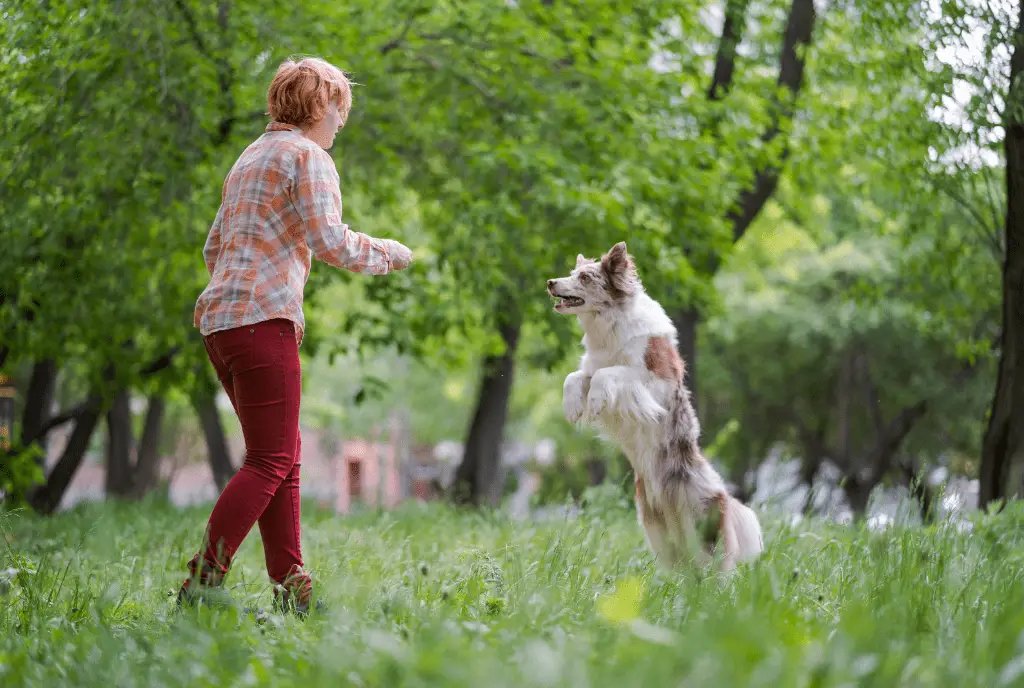
How does your dog react when you return home from work or run errands?
Do they greet you by jumping all over you, spinning around and running all over the house, or any combination of high energy reactions?
Over-excitement is the number one reason dog jumps on people, and it’s a challenging behavior to stop.
15. Leash
A walk on a leash may not do the trick for active breeds. Consider fetching and running games in a fenced yard or a dog park where the dog can run.
If you are away from home in the daytime for long periods, doggie daycare may be a suitable option for your dog.
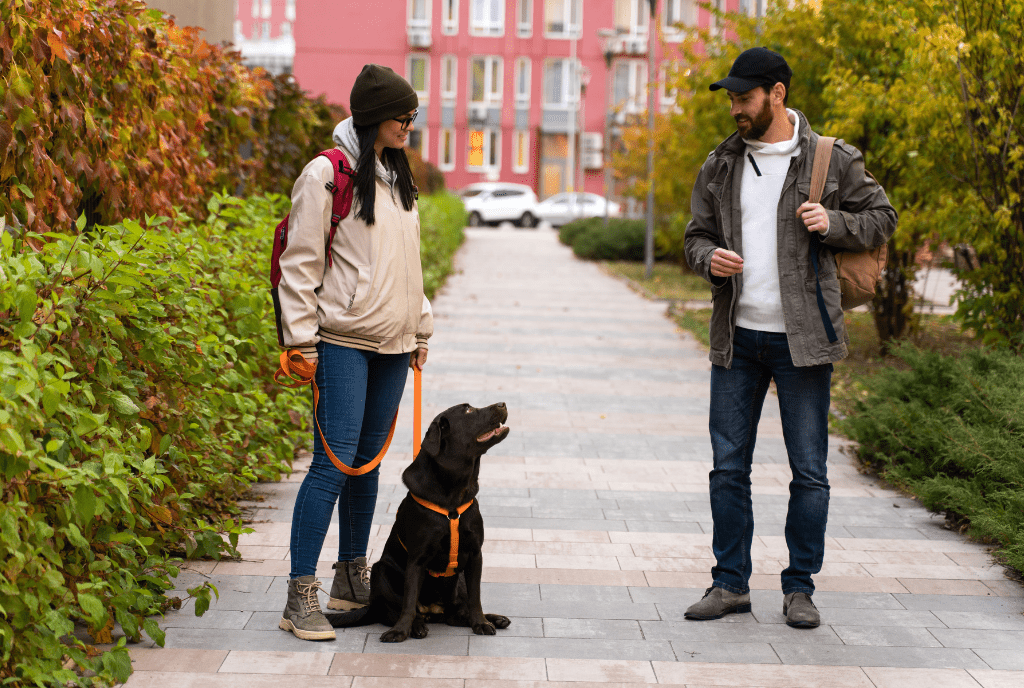
While releasing the head halter (negative reinforcement) immediately reinforces the behavior, it is not recommended to use this technique as it can be harmful or even lethal if misused.
Leash training should be a positive experience for both you and your dog. Additionally, use a leash that is lightweight and won’t get tangled. We recommend using a leash with a traffic handle.
Treat + Praise = Reward!
When he finishes his homework, give him an approving nod and then hand over that delicious chew toy from the closet in exchange for being able to use one during playtime today- don’t forget about giving treats as well, though, because it’s essential bonding behaviors like this will help keep relationships happy both inside AND outside of doors.
Again, giving rewards at other times will delay learning (learn to earn). If you reward a behavior you like, your dog will repeat it. If you reward a behavior you don’t like, your dog will repeat it even inadvertently.
Conclusion – How to Calm Down a Puppy
Over excitement, dogs can be a handful, but with some obedience training and good reinforcement, they can become a well-behaved member of the family.
Ensure your dog has enough room to move around, sit, lie down, etc. Training should focus on both the behavioral response (sit, down, walk, stay on your mat) and the emotional state (calm, relaxed).
Sit and Stay, or Place or House (this can be your puppy’s crate), and Stay, for example, are a couple of routines we teach owners to encourage their puppies to settle down on command and in a specific spot.
Over-excited dogs can be a handful, making excellent family pets with some obedience training and good reinforcement. Over excitement, dogs are more prone to destructive behavior and separation anxiety.







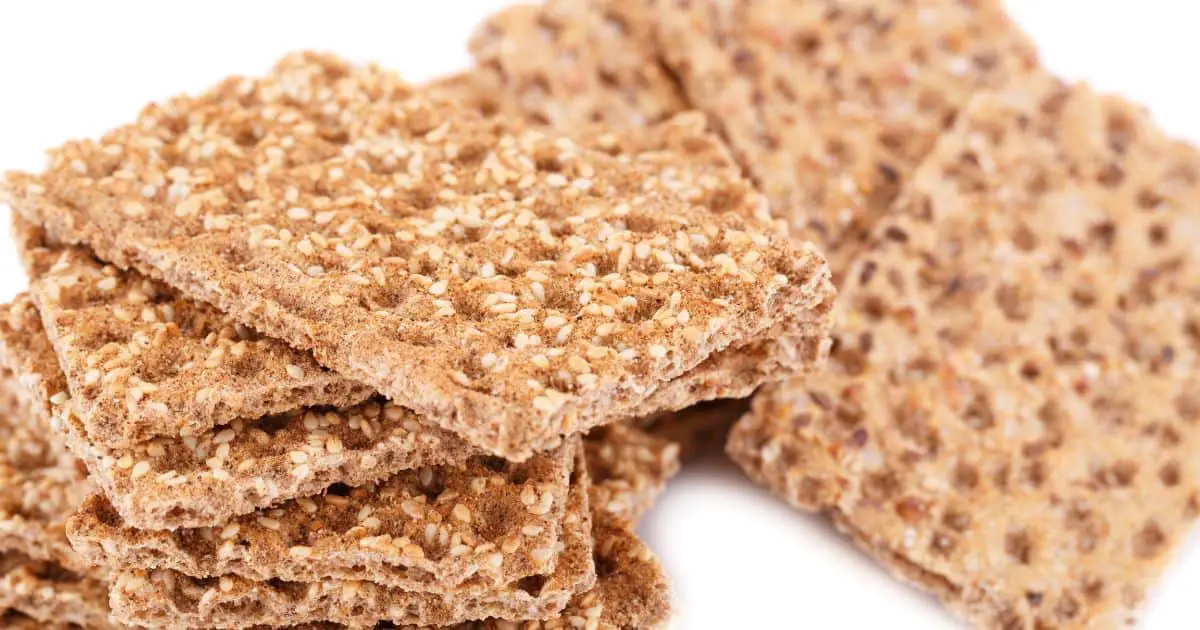
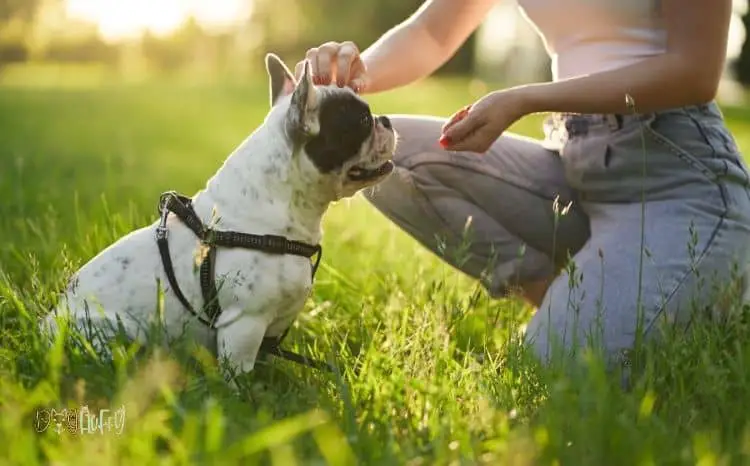
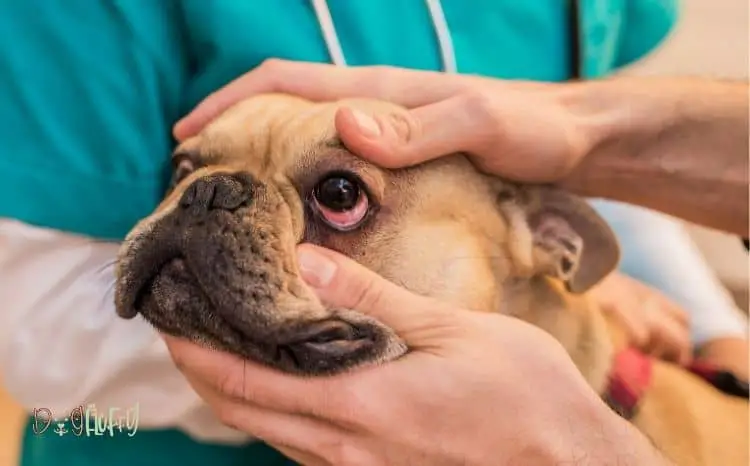
Leave a Reply
You must be logged in to post a comment.